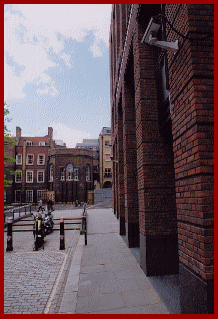| ||||||||||||||||||||||||||||||
Welcome to the | ||||||||||||||||||||||||||||||
 | ||||||||||||||||||||||||||||||
 | ||||||||||||||||||||||||||||||
Time Lapse, VCR's, DVR's, NVR's ... | ||||||||||||||||||||||||||||||
Although the CCTV industry is currently gripped by ‘Digital’ fever, it’s perhaps worth briefly mentioning, precisely how an analogue recorder works for the nbenefit of anyone currently using one. In simple terms, the (composite) video signal is processed by the video recorders internal circuitry and then ‘written’ onto 1/2” wide video tape, along with a seperate syncronising signal (to make it replay accurately) and an audio track for any additional sound feeds. Because video signals are quite big and complex, there is a lot of information to ‘write down’, so to accellerate the process, the tape travels at a constant speed, whilst the video recording heads are made to spin at a higher velocity, and therefore lay down far more information per second, than if the video heads had been stationary; interestingly enough, the video heads themselves are actually angled in relation to the tape, which again allows more information to be transferred during each head pass. Historically, there have been a range of different analogue formats suitable for CCTV video recording, but the two ‘standards’ which emerged in recent years, have been VHS and Super VHS (S-VHS) based. With the standard VHS time lapse, there are actually two main varients, the first being based on the normal VHS (3 Hour in PAL) format, this being the one most widely used throughout the CCTV industry. By using a front mounted speed selection button, the tape can be made to run at a fraction of the normal speed, and so provide fewer images per second, but over a much longer recording period. An obvious (and perhaps the most popular) example is the 24 Hour setting, which running at 1/8th of normal speed, will provide just over three images per second, and a full 24 hour period recording on one standard E-180 videocassette. | ||||||||||||||||||||||||||||||
 | ||||||||||||||||||||||||||||||
IMPORTANT: No material may be reproduced, copied or redistributed from this site, © doktorjon.co.uk 2004 - 2008 Homepage...:...Gateway...:...Technical Gateway....:....Quickfind Index....:....Equipment Directory | ||||||||||||||||||||||||||||||

